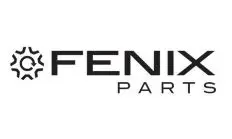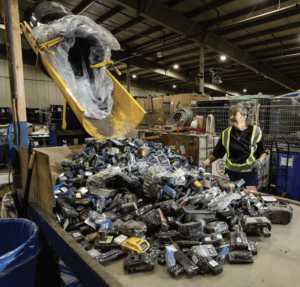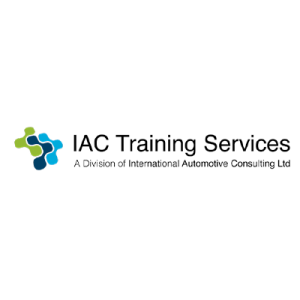By Jeff Sanford
Toronto, Ontario — July 5, 2016 — Auto recycling conglomerate Fenix Parts has announced its first quarter 2016 results this past week. While the company reported a loss, the underlying business seems to be doing well.
The company recorded a net loss of $41 million for the quarter, or $1.97 per share. The losses were tied to “significant non-cash amortization” and a “goodwill impairment charge” of approximately $43.3 million initially triggered by a decline in the company’s stock price. That is, the losses were largely paper ones. Looking at the company’s underlying business, there was reason to be positive about the performance of the company over the latest quarter.
Some of the highlights from the first quarter of 2016 include an increase in net revenues. The amount of money flowing through the company from sales increased by 9 percent to $32.8 million. This is up from $30.2 million in the fourth quarter of 2015. Company executives pointed to the recent acquisitions of recyclers Ocean County, Butler and Tri-City as driving growth in revenue—this seems to indicate that the Fenix game plan of driving revenue growth through acquisition is working.
The company also reported that overall sales of recycled OEM products improved, rising to $28.8 million for the first quarter of 2016, up from $26.7 million for the fourth quarter of 2015 and $27.3 million in the first quarter of 2015. That the company is advancing in its total sales is another positive sign at Fenix.
Sales from other ancillary activities such as scrap sales into the commodities market were approximately $4 million in the first quarter of 2016, up from $3.5 million in the fourth quarter of 2015 and $4.1 million in the first quarter of 2015. According to the company, “commodity prices improved slightly during the first quarter of 2016 as compared to the fourth quarter of 2015, [but] they are still substantially lower than the first quarter of 2015.
The goodwill impairment charge of $43.3 million was initially triggered by a decline in the company’s stock price of 32 percent during the quarter ended March 31, 2016. According to the company this forced a “revaluation of historic operating results through March 31, 2016” and led to an update in the company’s “future operating projections, risk premiums and other assumptions about enterprise value,” which also contributed to the impairment charge.
To put that another way, the plunge in the company’s stock price is making it more difficult to use stock as a currency for making acquisitions. Nevertheless, the company is selling parts and bringing in money, and that’s a good thing.
In a press release Kent Robertson, CEO of Fenix Parts, was quoted as saying, “We were pleased with our first quarter revenue growth as favorable industry dynamics and the continued execution of our growth initiatives drove sales of recycled OEM parts at nearly all of our facilities – including at the three locations we acquired in the back half of 2015.”
In a conference call following the release of the latest numbers the company noted that, “In the first quarter, we once again saw strong sales growth of recycled original equipment parts, driven by the successful execution of our growth initiatives and continued favorable industry dynamics….despite the soft January, several of our US locations had all time records in both February and March for part sales. Our core business continues to do well, and we’re gaining momentum. In the second quarter, we’re seeing very positive trends on a sales side and beginning to show leverage on the cost side.”
When it comes to costs the company is beginning to realize the efficiencies of scale that come with joining the eight founding companies together with the recent acquisitions. In the conference call Robertson noted that, “…our buying team continues to use a coordinated approach to purchasing vehicles more effectively. We’re utilizing one standard bidding platform that allows our team to review historical part demand, inventory stock levels and sales history based on company-wide information to support the vehicle procurement process.”
Robertson went on to say that the larger footprint of the company is beginning to appeal to larger multi-store operators who are able to find all the parts they need in one organization. Robertson suggested that Fenix is beginning to be seen as a competitor to the largest player in this sector, LKQ.
“Due to the larger size and scale we’ve achieved with Fenix parts, we’re starting to gain traction with multi-store operators or MSOs. Based on our conversations it’s very clear there is a need for a strong number two in the marketplace with broad geographic coverage, a large diverse inventory of parts and the infrastructure to distribute those parts,” said Robertson during the call. “These opportunities were not historically available to our independent founding companies before we combined to form Fenix Parts. We are adding new customers and are starting to see incremental revenue as a result.”
Scott Pettit, the Chief Financial Officer of Fenix, also addressed the conference call. He pointed out that in the last quarter Fenix, “…bought approximately 4,600 vehicles from auctions and paid an average of $2,300 per vehicle compared with roughly the same number of vehicles in Q4 ’15 and at an average price of $2,070. For self-service operations, we bought approximately 7,000 vehicles and paid approximately $200 per vehicle in Q1, compared with the purchase of 7,600 vehicles at an average price of approximately $180 in Q4 ’15.”
All in, though the company recorded a loss in the latest quarter, looking under the hood, there is reason for optimism. The company is making good on its promise to combine its various companies and to begin operating as a single unit.
“We are excited about the opportunities that lie ahead for Fenix Parts,” said Robertson on the call. “Our first quarter results began to show the strength of our model and the opportunity to grow Fenix Parts into a large profitable business. And I’m pleased that we’ve continued to see that sales momentum throughout the second quarter and the overall improvement of the business.”
Investors seem to understand this. According to recent reports in the financial trade press, Sanders Morris Harris has purchased a new stake in shares of Fenix Parts during the first quarter. Geode Capital Management LLC boosted its position in Fenix Parts by 6.7 percent. State Street Corp (one of the world’s largest institutional investors) added its position in Fenix Parts by increasing its stake by 9.3 percent in the first quarter. BlackRock Institutional Trust Company N.A. (another massive institiutional investor) also increased its position in Fenix Parts in the first quarter.
In a note to clients Joel Tiss, an analyst with BMO Capital Markets noted that, though the company reported a net loss, he maintains an “Outperform?” rating on the company.
According to Tiss’s report, “The results were noisy, with multiple adjustment items burying a rather improved quarter, as the Recycle OE business revenue grew by 9 percent organically [quarter over quarter] and 4 percent [year over year] … While the growth trend is notable, it seems to us that the lower share price, which triggered a $43 million goodwill impairment, and the $7 million inventory write-down have put strains on the company’s borrowing base … Despite the temporary setbacks the company is facing, we believe the long-term growth thesis for Fenix remains intact and the fact that revenue and margin improved in an extremely difficult industrial environment shows the company’s resiliency and growth potential.”
For more information,please visit fenixparts.com.



























